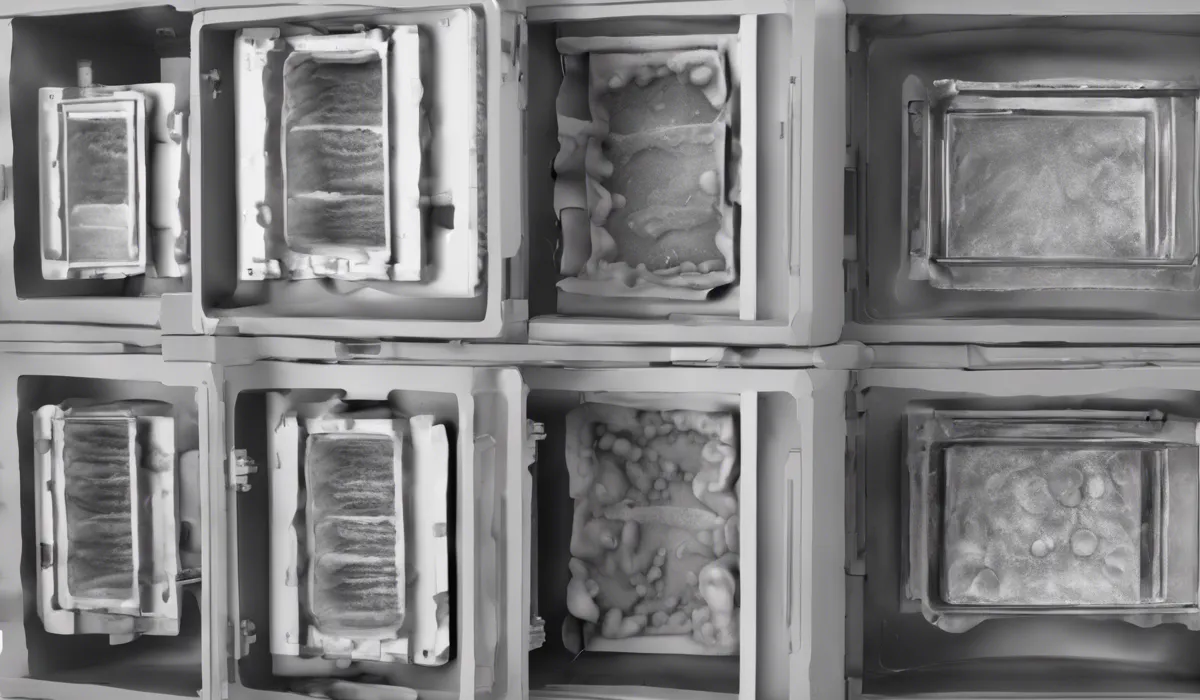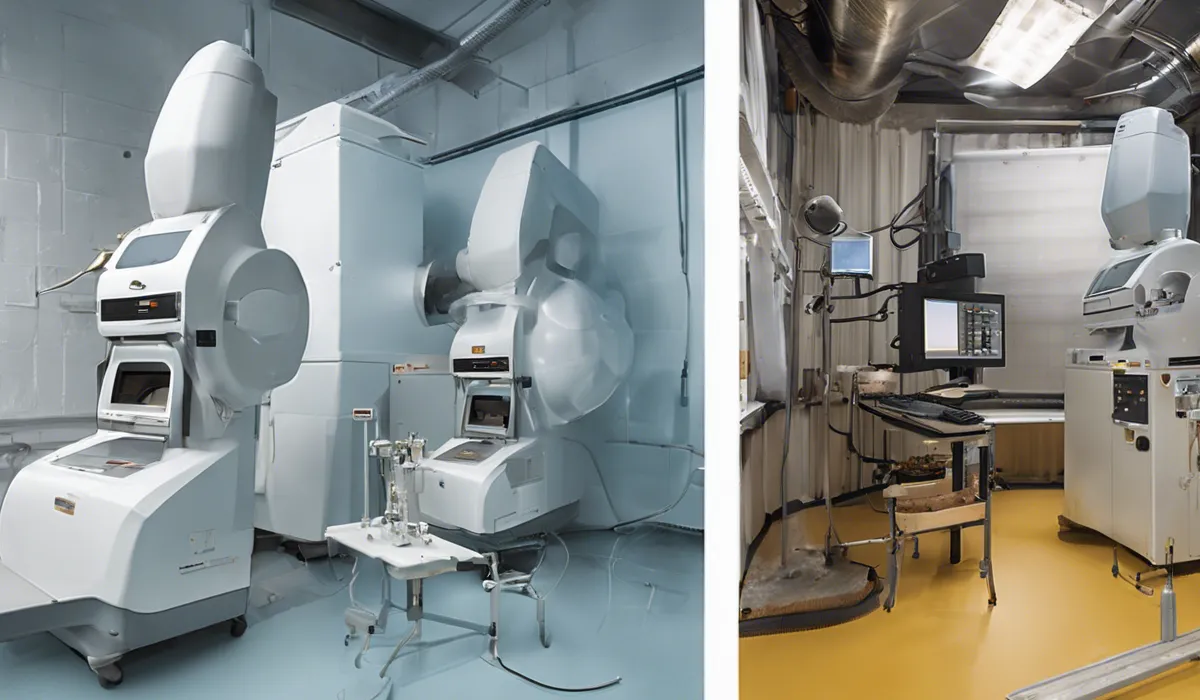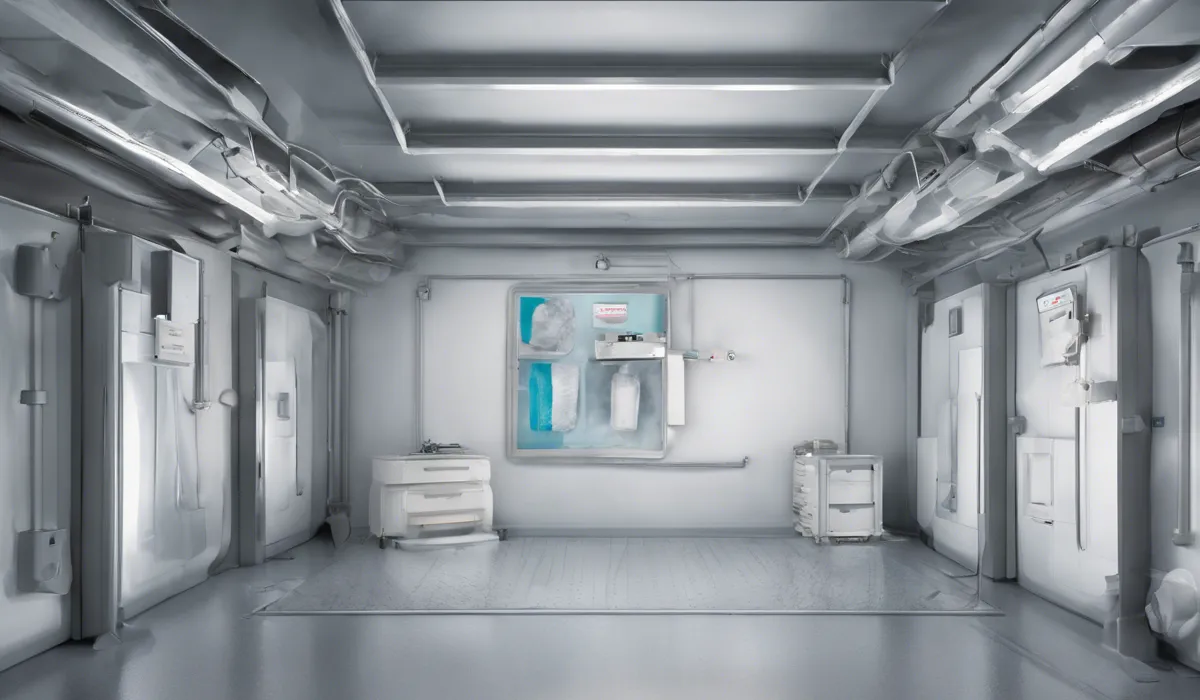Air mold tests are fairly accurate for detecting airborne spores but can vary due to factors like test type, environment, and sampling methods. Professional tests are generally more reliable than DIY kits. However, they may not reflect the mold levels in wall cavities or behind surfaces.
Understanding Air Mold Tests

What is Air Mold Testing?
Air mold testing is a method used to detect the presence of mold spores in the air. These spores are too tiny to see with the naked eye, but they can cause health problems and damage to your home if they grow and multiply.
Testing the air lets us know if there are mold spores floating around, even if we cannot see or smell them.
Types of Air Mold Tests
There are several ways to test for mold in the air. Settle plates are dishes that capture spores as they fall from the air.
Air sampling pumps, on the other hand, actively pull air through a filter to collect spores. Each method helps us understand the air in different ways and can tell us if we need to take action against mold.
Factors Influencing Test Accuracy
The accuracy of air mold tests can be swayed by a number of factors. Air flow can blow spores in or out of a room, changing the count.
Humidity can make the air feel heavy, affecting how spores settle and are captured. Temperature can speed up or slow down mold growth, leading to different amounts of spores in the air at any given time.
Limitations of Air Sampling
While air sampling is useful, it does have its limits. It does not tell us about mold hidden inside walls or under floors.
It also cannot always tell us the source of the mold, only that the spores are in the air. This means we might need to do more digging to find and fix the mold problem.
Factors Contributing to the Accuracy of Air Mold Tests

Professional Expertise in Testing
Experts who test for mold know how to get the most accurate results. They understand how to use the testing equipment properly and how to read the results.
They also know the best places in a house to test for mold, ensuring that the tests are done correctly and provide reliable information.
Test Timing and Mold Growth
The timing of the test is important too. Mold grows in cycles, with spores spreading at certain times.
Testing at the right moment can give a true picture of the mold situation, while testing at other times might not catch the spores when they are most abundant.
Environmental Impact on Spore Concentration
The environment around us can change how many spores are in the air. A windy day might bring in spores from outside, or a rainy day might increase humidity and mold growth.
By understanding these effects, we can better interpret the test results.
Comparing Outside and Inside Air
To get an accurate assessment, we should compare the spores found inside to those outside.
If there are more spores inside, it may indicate a mold problem in the house. This comparison helps us understand if the indoor air is being affected by mold growing within the home.
Calibration and Maintenance of Equipment
The tools used for testing must be kept in good condition. This means checking them regularly to make sure they are working right and calibrating them so they measure accurately.
Properly maintained equipment is key to getting accurate test results.
Interpreting Air Mold Test Results

What is a ‘Normal’ Mold Spore Count?
A ‘normal’ mold spore count is what we would expect to find in a typical home or building. Professionals have charts and numbers to help them decide what is normal.
These counts can vary, but they give us a baseline to compare our test results against.
Determining Problematic Mold Levels
Professionals use their knowledge and experience to decide if mold levels are a problem. They consider the test results, the type of building, and the people who use the space.
If the spore count is high or if dangerous types of mold are found, they will suggest ways to fix the problem.
Identifying Specific Mold Types
Knowing the types of mold is important because some are more harmful than others. Tests can show what kinds of mold are present, which helps us understand the risks and how to deal with them. This information is crucial for making a safe and effective plan to get rid of the mold.
Combining Test Results with Other Methods
Air mold test results are often used along with other testing methods, like taking samples from surfaces or materials in the building.
By combining these methods, we get a more complete picture of the mold problem. This helps us make sure we are not missing any hidden mold.
Air Mold Tests in Mold Assessment Strategy
Air mold tests play a big role in a full mold assessment strategy. They provide valuable information about the air we breathe.
When used with other testing and inspection methods, they help us make sure our homes and buildings are safe and healthy places to live and work.
FAQs About Air Mold Test Accuracy
How accurate are air mold tests for detecting airborne spores?
Air mold tests are fairly accurate for detecting airborne mold spores, but accuracy can be influenced by the type of test, environmental conditions, and sampling methods used.
Do professional mold tests offer better reliability than DIY kits?
Yes, professional mold tests are generally considered more reliable than DIY kits due to their more advanced technology and the expertise of the professionals conducting them.
Can air mold tests detect mold inside walls or behind surfaces?
No, air mold tests may not accurately reflect the levels of mold in wall cavities or behind surfaces since they typically assess only the mold spores present in the air.
What factors can affect the variability of air mold test results?
Variability in air mold test results can be affected by factors such as fluctuations in the environment, the specific sampling methods used, and the type of test conducted.
Are air mold tests a definitive method for assessing mold presence in a home?
Air mold tests can be a useful tool for assessing the presence of airborne mold spores, but they should be complemented with other methods for a comprehensive mold assessment, as they do not provide information on non-airborne mold sources.
Final Thoughts
Air mold tests are reasonably precise for detecting airborne spores, though accuracy varies with test type, environmental conditions, and sampling methods.
Professional assessments tend to be more reliable than DIY kits, but may not reveal mold presence within wall cavities or hidden areas, potentially underestimating actual mold levels.
